Looking for a delicious and Easy Prime Rib recipe? I’ve got you covered! My recipe stars a simple homemade garlic-herb butter that transforms into a delicious crust atop boneless or bone-in rib roast. Plus, I’ve included step-by-step instructions and expert cooking tips to make sure you have success in the kitchen. You’ll love this juicy, tender, foolproof recipe!
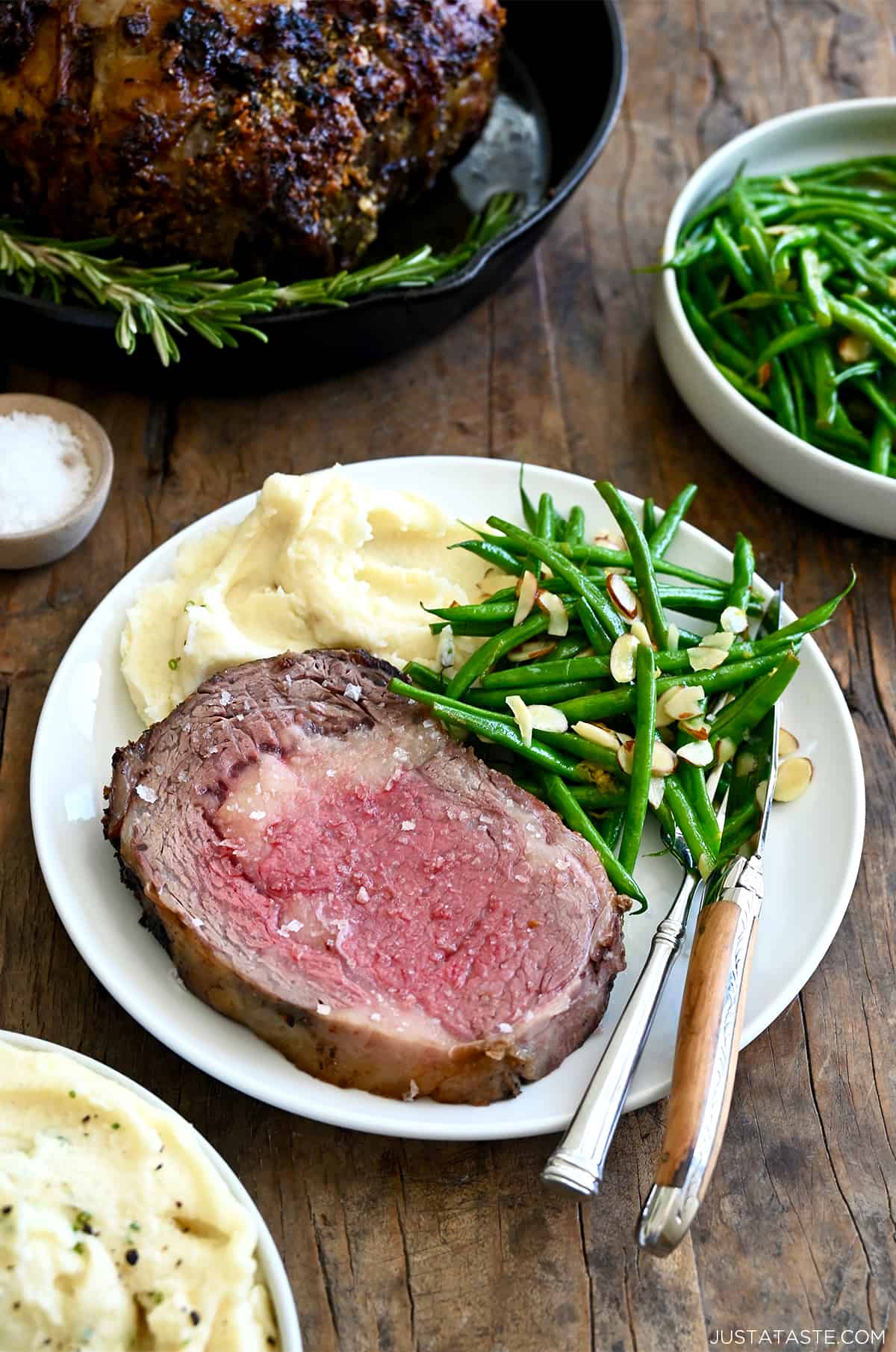
Table of Contents
Prime rib, blistered green beans and creamy mashed potatoes. It doesn’t get much better than that! But this isn’t your ordinary prime rib recipe, this is a garlic herb-crusted prime rib recipe.
Welcome to the ultimate guide to creating a restaurant-worthy prime rib. Whether you’re hosting a special occasion, holiday party or just want to treat yourself to a gourmet meal, this recipe promises to deliver juicy, flavorful and perfectly cooked prime rib that will leave your guests and taste buds wanting more!
What’s to Love
- It’s easy. I tested and re-tested this recipe multiple times to make sure it was easy and foolproof.
- Both bone-in and boneless prime rib cuts can be used.
- The garlic herb butter crust adds layers of flavor to every bite.
- Restaurant-quality at home.
- Juicy, tender and bursting with flavor.
- Leftovers can be used in a variety of dishes, such as sandwiches or salads.
Choosing Between Bone-In vs. Boneless
When it comes to prime rib, deciding between bone-in and boneless cuts depends on your personal preference and how you plan to cook and serve it. A bone-in roast enhances the meat’s flavor, while a boneless cut makes carving easier. If you’re aiming for an elegant presentation and want to add more flavor to your dish, I suggest going for the bone-in option.
How to Pick the Perfect Prime Rib Roast
My #1 tip for selecting the perfect rib roast is to look for a cut with generous marbling. This intramuscular fat can really enhance both the flavor and tenderness of the meat. For the best results, go for a roast with well-distributed, fine streaks of fat throughout the muscle. This will help ensure a moist and juicy result when cooked.
Another important factor to consider is freshness. Look for a roast with a bright, cherry-red color and milky white fat. Steer clear of dull-colored meat and fat that appears yellowish. And don’t be afraid to ask your butcher for assistance; they can offer insights into the best cuts available and may even custom trim the roast to your preferences.
How Much Per Person
The general rule of thumb is 1 pound of prime rib per person. However, don’t hesitate to adjust this based on your guests’ appetites and your overall menu.
If it’s going to be part of a holiday spread, it’s a good idea to plan on about half a pound per person. For a sit-down meal where the roast is the star of the show, you’ll want to plan for one pound per person or one rib for every two diners. For example, a four-bone roast can easily feed up to eight guests.
And if you’re not sure, it’s always better to get a little extra. After all, leftover prime rib is just as delicious the next day!
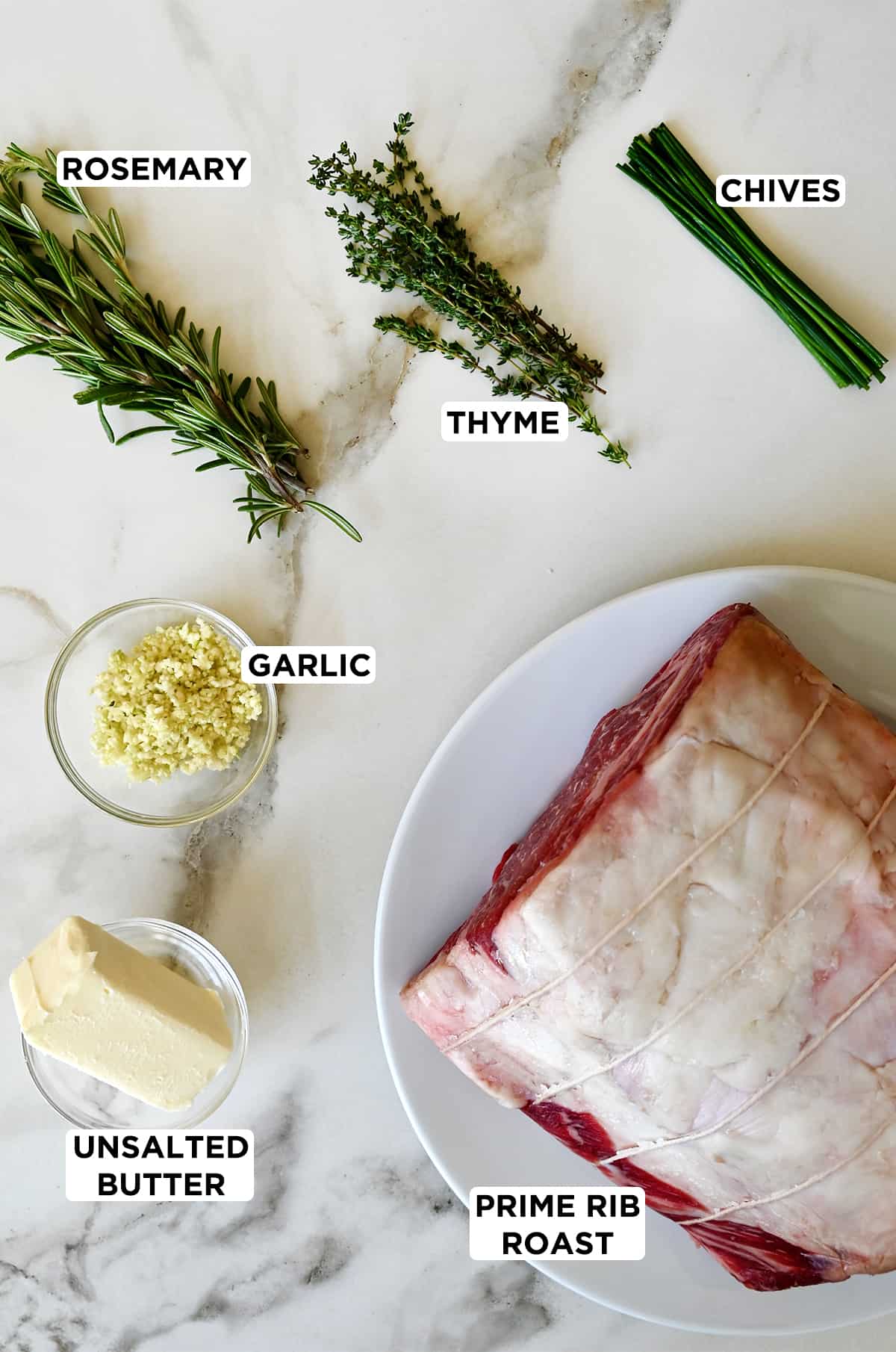
- Bone-in or boneless rib roast: The star of the show, the rib roast is a cut from the primal rib section of the cow. It’s known for its marbling, tenderness and rich flavor. Whether you go for bone-in or boneless is entirely up to your preference, but the bone-in option is known to add an extra depth of flavor to the meat.
- Unsalted butter: Opting for unsalted butter allows better control over the overall saltiness of the dish. Make sure it’s at room temp for easy mixing with the herbs and garlic.
- Garlic: Brings a pungent and savory flavor to the herb-infused butter mixture.
- Herbs: I prefer to use fresh herbs, but if you’re in a pinch, dried herbs work, too. Keep in mind that dried herbs are more concentrated than fresh ones, so you’ll need to adjust the quantities accordingly. A general rule of thumb is to use about one-third of the amount of dried herbs compared to fresh.
See the recipe card for full information on ingredients and quantities.
- Bring to room temperature. Bring the roast to room temperature by setting it out at least 2 hours prior to cooking.
- Preheat the oven to 450°F.
- Pat dry. Pat down the prime rib with paper towels to ensure it’s as dry as possible.
- Make the herb butter. In a medium bowl, stir together the softened butter, garlic, chives, rosemary and thyme with 2 teaspoons kosher salt and 1 teaspoon black pepper.
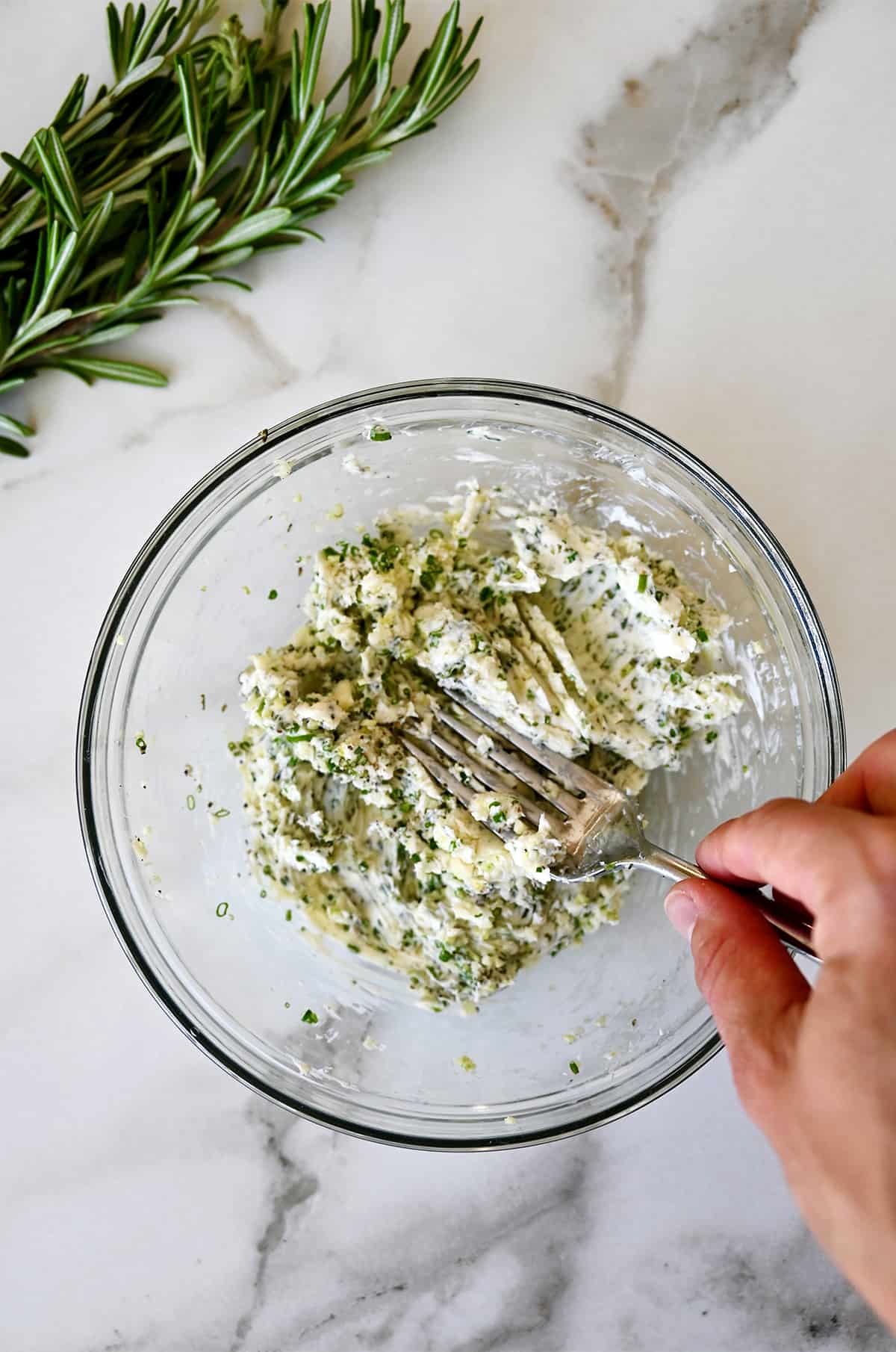
- Coat the prime rib. Place the prime rib bone side down in a cast-iron skillet or baking dish. Slather the garlic butter all over the top and sides of the roast.
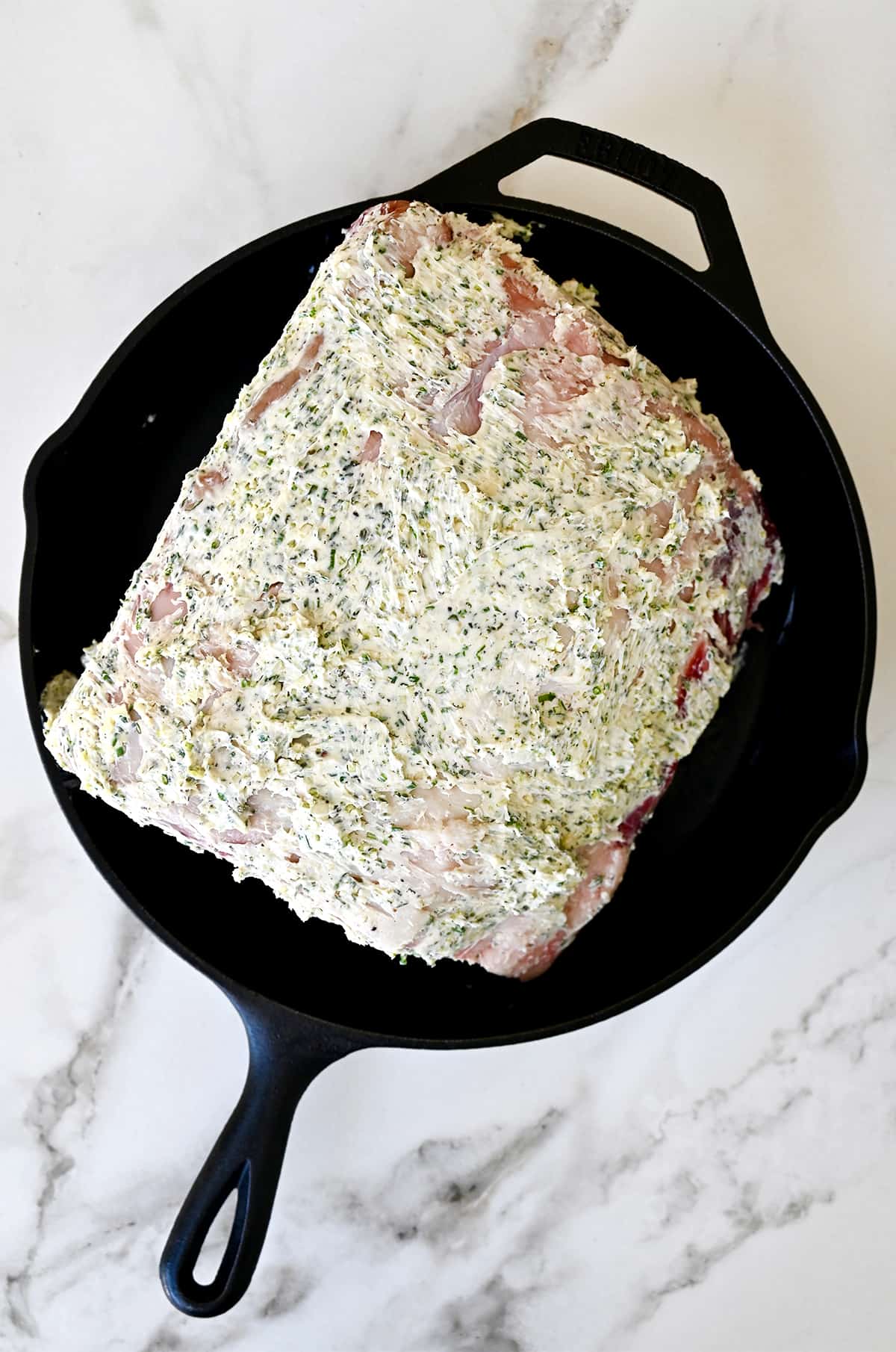
- Roast to create the crust. Place the roast in the oven and cook until a beautiful dark crust forms, 20 to 25 minutes.
- Lower the oven temperature. Reduce the oven temperature to 325°F.
- Continue cooking. Continue cooking the prime rib until it reaches your desired internal temperature. Refer to the minutes per pound and temperature chart for guidance.
- Rest before carving. Remove the roast from the oven and let it rest for 20 minutes before slicing and serving.
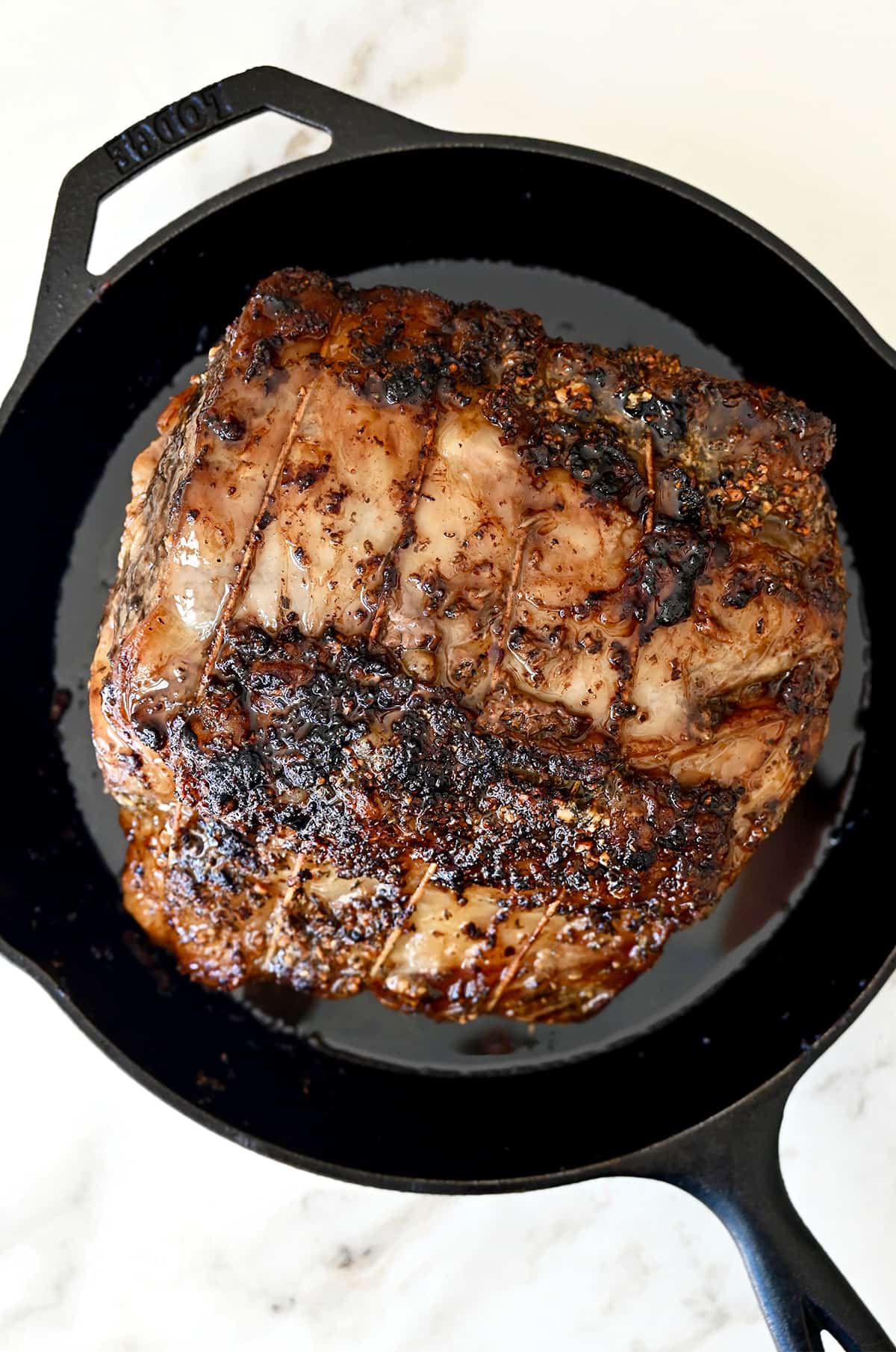
Cooking prime rib to perfection requires careful attention to temperature and timing. You’ll start by cooking your rib roast at 450°F for 20 to 25 minutes. This creates that delicious garlic-herb crust. Then, you’ll reduce the temp to 325°F and continue cooking until it reaches your desired level of doneness. Here’s a handy guide:
- Rare: 10-12 minutes per pound
- Medium Rare: 13-14 minutes per pound
- Medium Well: 14-15 minutes per pound
The exact cooking time can vary based on factors like the cut of meat, the accuracy of your oven and the starting temperature of the roast. Therefore, it’s crucial to use a meat thermometer to monitor the internal temperature:
- Rare: 120°F – Remove from the oven at 110°F
- Medium Rare: 130°F – Remove from the oven at 120°F
- Medium: 140°F – Remove from the oven at 130°F
- Well Done: 160°F – Remove from the oven at 150°F
Keep in mind that the temperature will continue to rise by 5-10 degrees while the prime rib rests outside the oven, so make sure to remove it before it reaches your desired temperature.
- Room Temperature: Bring the rib roast to room temperature before roasting for more even cooking.
- Use a Meat Thermometer: Invest in a reliable meat thermometer to monitor the internal temperature accurately. This ensures the prime rib is cooked to your desired level of doneness.
- Let It Rest: After cooking, let the prime rib rest for at least 20 minutes before carving. This allows the juices to redistribute, resulting in a moist and tender roast.
- High Temp, Low Temp: The initial high temperature is key for creating a flavorful crust, but be sure not to skip the crucial step of reducing the oven temperature for the remainder of the cooking time. This slow roasting allows the meat to cook evenly and retain its juiciness without overcooking the exterior.
- Carve Against the Grain: When carving, slice against the grain for a more tender serving.
- Creamy Mashed Potatoes or Mashed Sweet Potatoes
- Cheesy Hasselback Potatoes
- Crispy Bacon-Wrapped Asparagus Bundles
- Honey Roasted Carrots
- Muffin Pan Popovers or Homemade Dinner Rolls
Common Questions
Both are excellent choices. Bone-in adds flavor, while a boneless roast allows for easier carving.
I highly recommend cooking your prime rib uncovered. This method allows for that perfect sear on the outside, creating a mouthwatering crust that locks in the flavorful juices. The slow roasting process, uncovered, ensures an even cook throughout, resulting in a prime rib that’s tender and juicy.
Store leftover prime rib in an airtight container or tightly wrapped in aluminum foil in the refrigerator. It can stay fresh for up to 3-4 days. To maintain its juiciness, I recommend reheating gently in a low-temp oven (around 250°F). Place the prime rib in an oven-safe dish, and cover it loosely with foil to prevent drying. Heat until it reaches your desired warmth, periodically checking with a meat thermometer. Avoid microwaving, as it can lead to uneven heating and potential dryness.
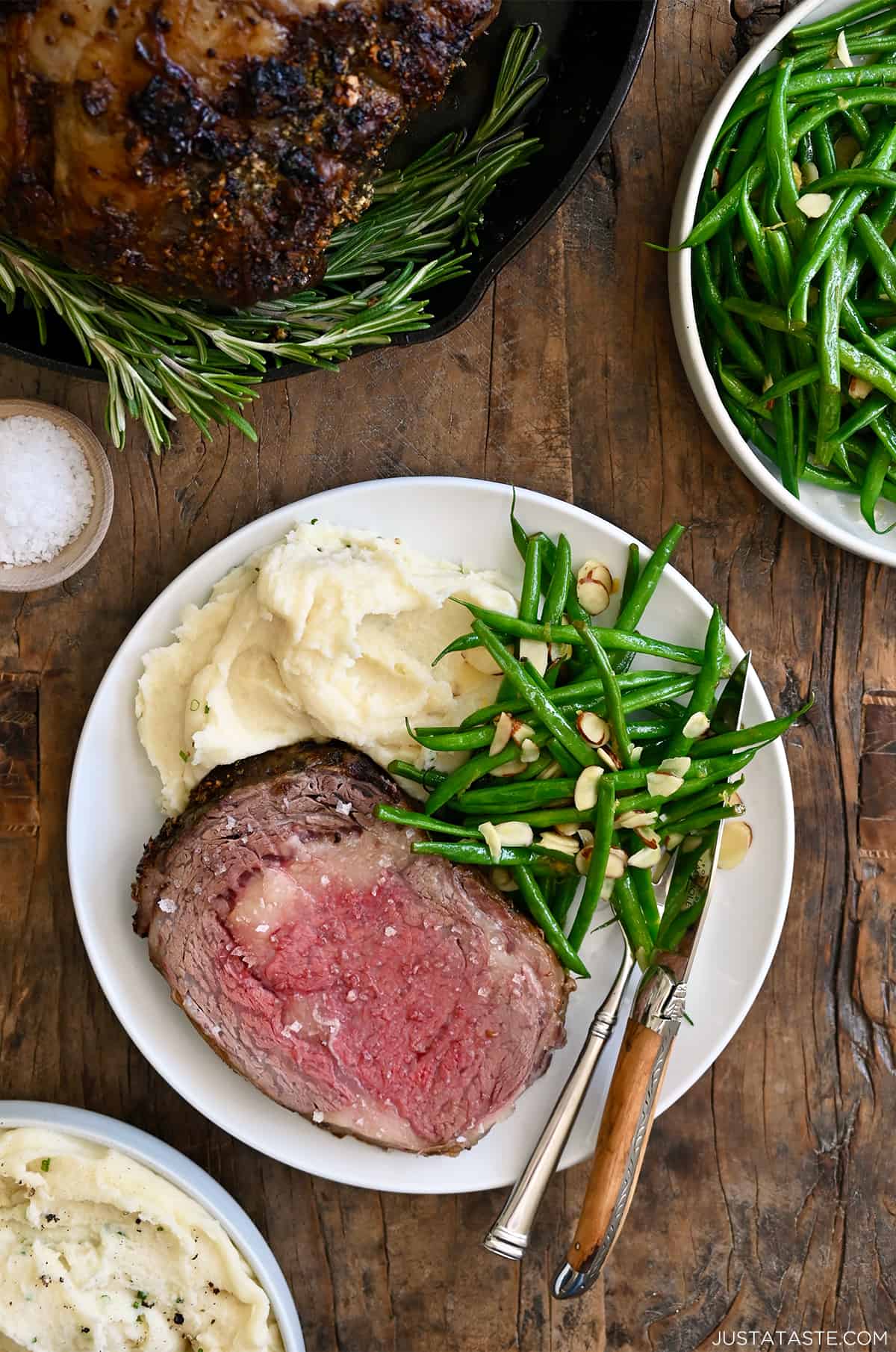

Equipment
- Meat thermometer
Ingredients
- 1 (8-lb.) bone-in or boneless rib roast
- 8 Tablespoons unsalted butter, at room temp
- 3 Tablespoons minced fresh garlic
- 1 Tablespoon minced fresh chives
- 2 teaspoons minced fresh rosemary
- 2 teaspoons fresh thyme leaves
Instructions
- Bring the roast to room temperature by setting it out at least 2 hours prior to cooking.
- Preheat the oven to 450°F.
- Pat down the prime rib with paper towels to ensure it’s as dry as possible.
- In a medium bowl, stir together the softened butter, garlic, chives, rosemary and thyme with 2 teaspoons kosher salt and 1 teaspoon black pepper.
- Place the prime rib bone side down in a cast-iron skillet or baking dish.
- Slather the garlic butter all over the top and sides of the roast.
- Place the roast in the oven and cook it until a dark crust forms, 20 to 25 minutes.
- Reduce the oven temperature to 325°F and continue cooking the roast until it reaches your desired internal temperature.Rare: 10-12 minutes per poundMedium Rare: 13-14 minutes per poundMedium Well: 14-15 minutes per poundThe exact cooking time can vary based on factors like the cut of meat, the accuracy of your oven and the starting temperature of the roast. Therefore, it's crucial to use a meat thermometer to monitor the internal temperature:Rare: 120°F – Remove from the oven at 110°FMedium Rare: 130°F – Remove from the oven at 120°FMedium: 140°F – Remove from the oven at 130°F Well Done: 160°F – Remove from the oven at 150°FImportant: The temperature will continue to rise by 5-10 degrees while the prime rib rests outside the oven, so make sure to remove it before it reaches your desired temperature.
- Remove the roast from the oven and let it rest for 20 minutes before slicing and serving.
Kelly’s Notes
- Use a meat thermometer. This ensures the prime rib is cooked to your desired level of doneness.
- After cooking, let the prime rib rest for at least 20 minutes before carving. This allows the juices to redistribute, resulting in a moist and tender roast.
- When carving, slice against the grain for a more tender serving.
- ★ Did you make this recipe? Don’t forget to give it a star rating below!
Nutrition
Did you try this recipe?
Leave a comment below with your star rating!
This post may contain affiliate links.
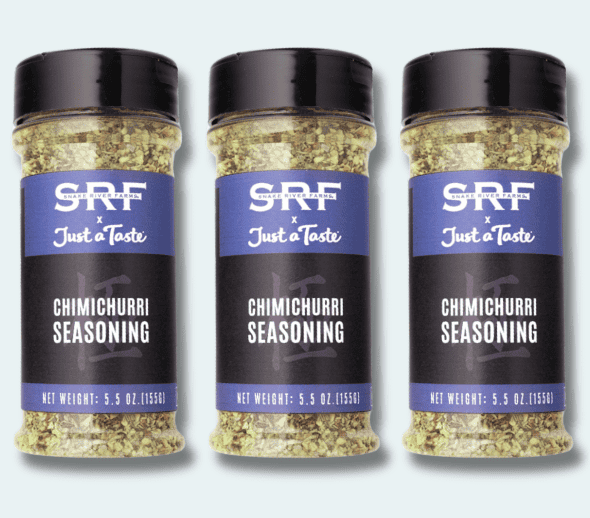
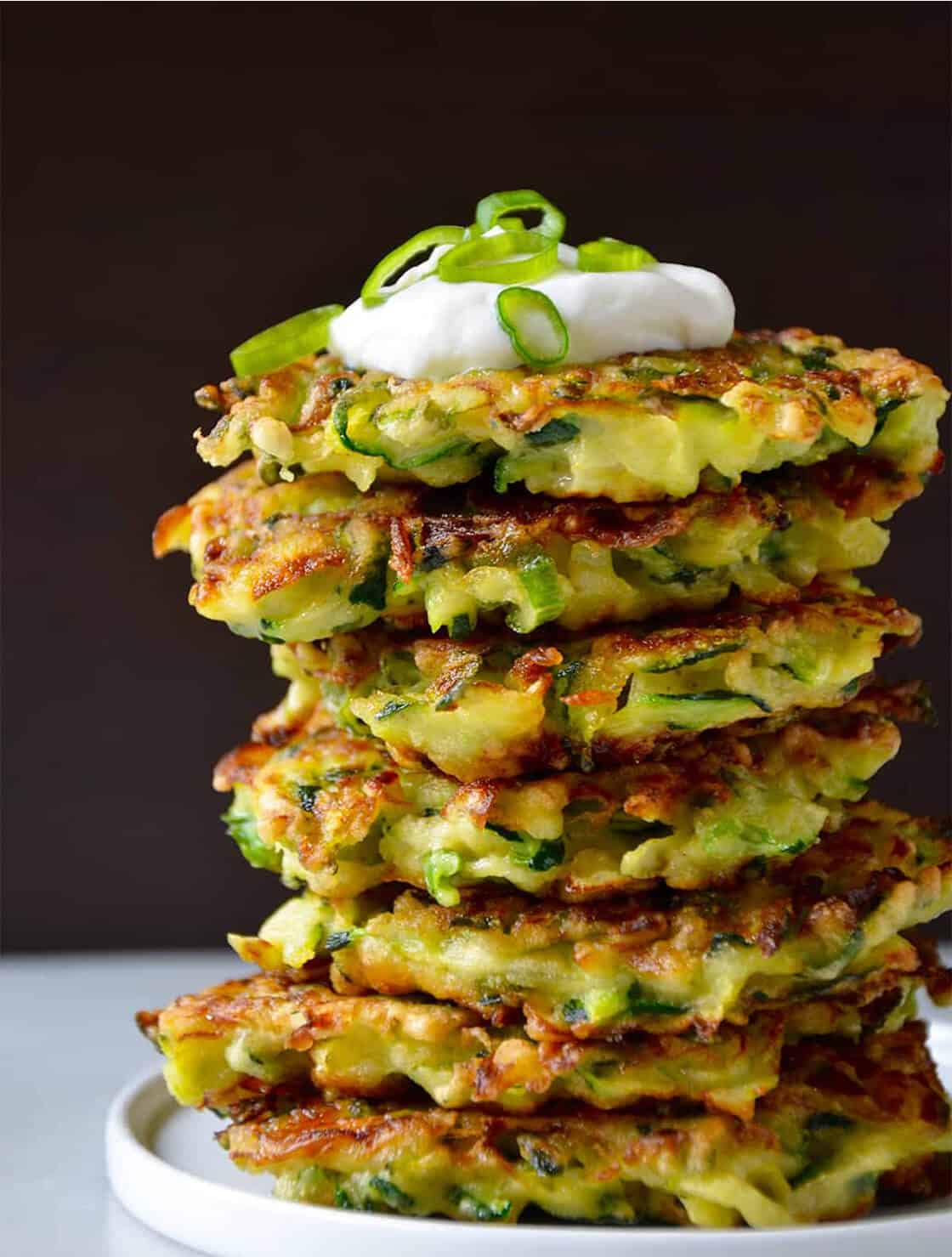
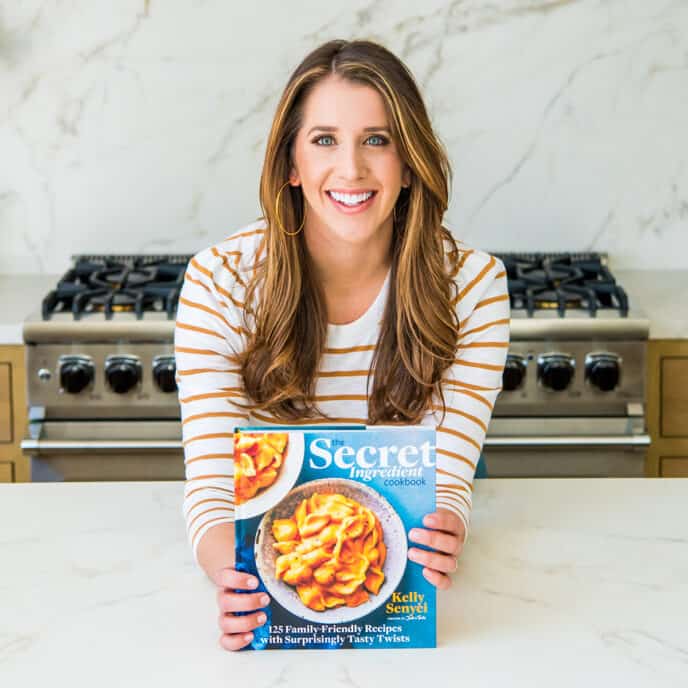
I have a question. After cooking at 450 I turn oven down to 325. Does the time it cooked at 425 count towards the total cooking time per pound or do I start timing once turned down to 325 . hope this isn’t confusing.
Hi, Linda! The 425 counts towards the total time!